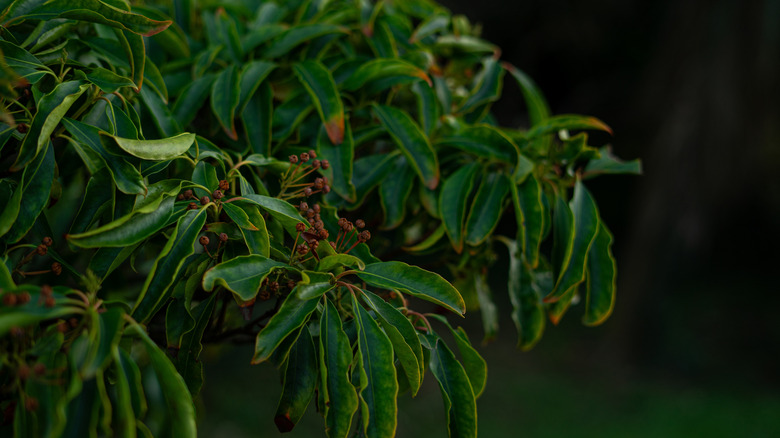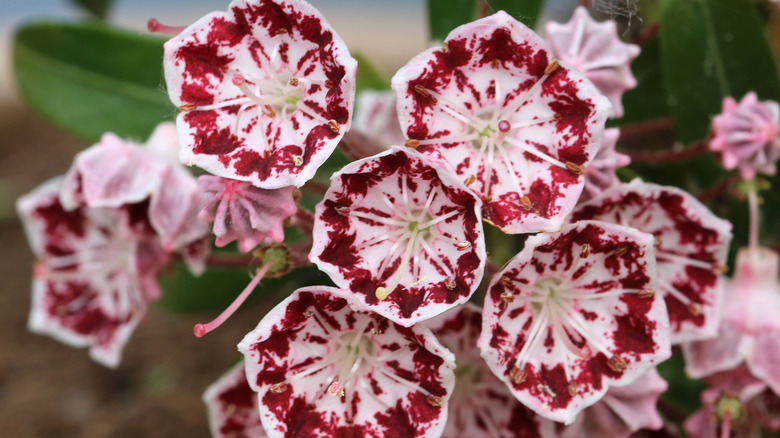The Unique, Gorgeous Flower With A Deadly Dark Side
When it comes to picking out plants to grow in your yard, the initial thoughts often come down to whether or not it will thrive in your USDA Hardiness zone, if it's invasive, how hard it is to care for, and if you like its appearance. However, with some plants, such as the mountain laurel (Kalmia latifolia), you have to learn about the dangers the plant presents. If you want to make sure it is thriving and happy, and you stay safe, take time to research everything you need to know before planting mountain laurel.
Moutain laurel is a very poisonous plant. Even honey made from these plants is considered dangerous, often nicknamed "mad honey." All parts of the plant are poisonous, including the bark, seeds, leaves, stems, and sap if ingested. This is true for children, adults, and animals. Even small amounts of laurel can lead to severe sickness and potentially death. Common symptoms include vomiting, abdominal pain, muscle tremors, irregular heart rate, seizures, and convulsions.
Despite this, actually touching the plant doesn't lead to problems unless you have sensitive skin. So while it's okay to grow this plant, it may be best to avoid it if there are any pets or children around that could eat a part of the plant they shouldn't.
Despite the dangers, the mountain laurel is an enticing plant to grow
Mountain laurel is a beautiful plant, with bright, five-point pink and white flowers and green foliage that remains vibrant throughout the year. The greenery is thick, which is why they are one of the evergreen hedges and shrubs that provide privacy in the winter. They are durable as well, able to handle droughts, wild storms, and temperature fluctuations. The flowers are highly attractive to pollinators. Mountain laurel thrives in USDA Hardiness zones 4 to 9, and does well outdoors even in the colder weather.
For all of these reasons, it can be enticing to purchase and start growing mountain laurel in your garden. While poison is the main threat, they do have other dangers. In the wild, they are often known as "ankle-breakers" or "ankle-twisters" because their gnarled branches shoot off in a variety of directions and can be a tripping hazard. To prevent this same danger in your garden, you'll want to trim the plant regularly.
There is a perk to planting it, though. Because of its danger to animals, it tends to deter deer and rabbits. So growing this around your garden or along the edge of your home can help protect the rest of your yard while adding stunning color and visual interest. After all, despite the dangers, this is one of the evergreen shrubs that make your landscaping look great all year.

